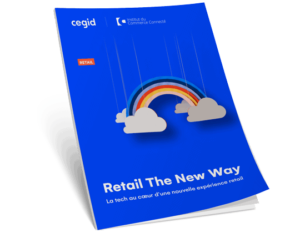Retail & Distribution
The Christmas shopping checklist to help prepare retailers for peak end-of-year sales and save Christmas
24 november 2020

Here are six tips to maximise end-of-year sales:
Improve your product listings & catalogues
Customers who can no longer see and touch a product, as they did before, will have to rely on detailed descriptions instead. The more thorough, the better – making it more likely to trigger a sale. Accuracy of information is vital: if, for instance, the size or dimensions are wrong, the item will most likely get returned. Quality visuals also play a large part, as do customer reviews. We’ve already seen the rise of live commerce and videos being used online to sell products – particularly in China this summer. It’s brought about a new craze in teleshopping: either using live open feeds to showcase products; or offering one-to-one VIP personal shopper sessions. This can be a valuable opportunity to entrust new responsibilities to sales staff.
Ship orders from the best location:
To make sure you have a profitable e-commerce business, you need to determine the best place to ship an order by taking into account various criteria: such as warehouse and store inventory levels and locations; delivery address, delivery times and costs. This is made a lot easier with a dedicated Retail Order Management System (OMS) that can sift through a multitude of data to identify the ideal shipping locations and minimise stock shortages and costs.
Train store staff:
If stores remain closed in some countries, they still have a role to play as a logistics hub. So it’s important to train staff in warehouse and inventory practices and order preparation to limit possible errors. Processes must be set up to help handle returns and staff need to be equipped with the right mobile tools to carry out any operations smoothly. If, a shopping we all hope, the stores are open, your staff need to be trained and coached on new sanitary conditions and constraints including appointment setting, social distancing, people counting etc and be equipped with the right tools
Boost bandwidth:
During the March lockdown in most western European countries, consumers continued to buy online. This saw massive spikes in the number of people visiting sites, so you need to be prepared for increased volumes by boosting bandwidth. Otherwise, a slow or failed-to-load web page is likely to jeopardise a sale.
Adapt your stores:
It’s a good idea to switch any locked-down stores that can’t be open to the public to ‘dark store’ mode: in other words, as an outlet that caters only to online shopping. So it’s less about rearranging shelves for aesthetic appeal; it’s more about making sure that high-rotation products are quickly and easily accessible. And, with click-and-collect becoming more commonplace, you’ll be better off reorganising your stores to focus on parcel collection and minimising queues. This might simply be a table at the entrance of a store, but you’ll need to allow staff access to a computer or PDA to verify the order as well as a person’s identity. In addition, you mustn’t forget the management of returns and setting up a protocol for the quarantine and disinfection of products. Stores acting as logistics hubs may also have to revise store opening times. For instance, Monday mornings can often be busy with customers who’ve placed orders over the weekend.
Focus on customer service:
If you are moving purchases away from the store and onto the web or anticipate more web sales, this will mean more time spent dealing with requests about orders placed online. Given that some things like deliveries can depend on third party suppliers, it’s important to have good visibility and communication tools – including keeping the customer informed and up-to-date at all times. Even if a package is due to arrive late, it’s better to let the customer know and avoid disrupting customer service.
Of course, we’re all hoping that current lockdowns on non-essential stores will be lifted in time for December. But the lasting impact of the changes we have faced over the past months will serve retailers to retail the new way in the long run – helping many speed up their transition to a hybrid model of retailing that satisfies the consumer, however they like to shop.



